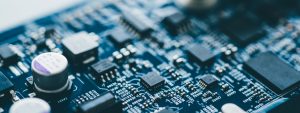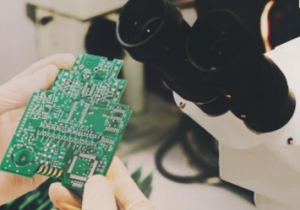Chemical composition of printed circuit boards

Computer board hardware motherboard microelectronics Server CPU chip semiconductor circuit core blue technology background or blue texture with processors concept electronic device
The elementary composition of printed circuit boards depends on its type and application. In general, metals in printed circuit boards can reach 40%, ceramics 30%, and plastics 30%. Electrical or electronic components make up only 3% of the weight of printed circuit boards. The base of the panels is usually composed of epoxy or cyanate resins (multilayer panels) or phenolic resins (single-sided panels). Certain hardeners are used in conjunction with the resin to form transverse bonds. The most commonly used hardeners are dicyandiamide,diaminodiphenyl sulfonate, diaminodiphenylmethane.
The main material that strengthens the base of printed circuit boards is made of fiberglass or silica. Aluminum, oxides of alkali and alkaline earth metals, small amounts of other oxides, e.g. barium titanate can also be detected in printed circuit boards. Ceramic glass such as BeO can be found in SP “sockets” and “bridges”.
About 10-20 percent. Printed circuit boards are made up of copper, which forms a layer of wires for electrical connections between different components. Precious metals such as Au and Pd are used to bond contacting materials. Pb / Sn alloys used to bond various components account for 4-6%. total weight of printed circuit boards. The components that are mounted on the printed circuit boards also contain various metals such as Ga, In, Ti, Si, Ge, As, Sb, Se, Te, Ta, and so on. t .; platinum metals are present in relays, switches or sensors
Electronic devices can be recycled by manual disassembly as well as mechanical, chemical and thermal methods. The aim of these technologies is to rationally combine economic and environmental aspects. The recycling of this waste can be divided into two main stages – primary treatment of waste, and


